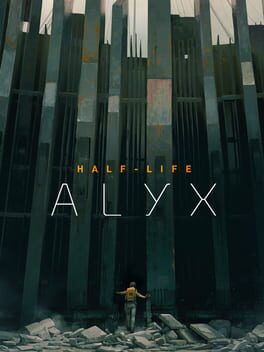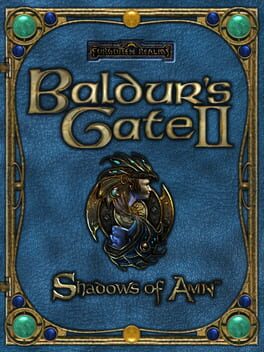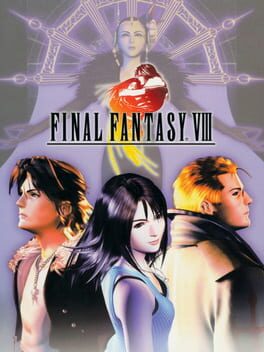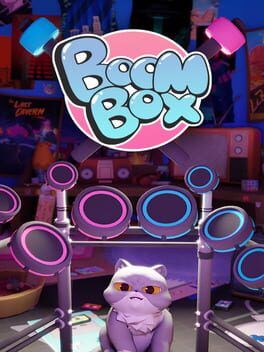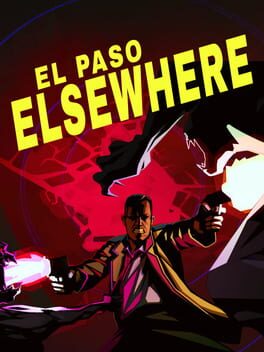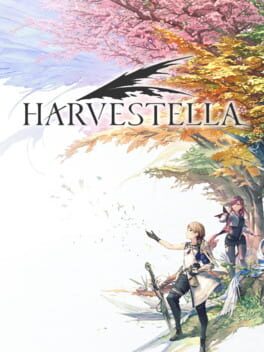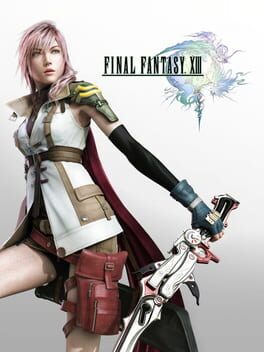MrDeadshot
Bio
Welcome to my futile quest to review every game I've finished or played for a longer time ...
Welcome to my futile quest to review every game I've finished or played for a longer time ...
Badges

1 Years of Service
Being part of the Backloggd community for 1 year

Liked
Gained 10+ total review likes
Favorite Games
024
Total Games Played
003
Played in 2024
000
Games Backloggd
Recently Played See More
Recently Reviewed See More
It is obvious that a lot of heart and soul went into making Robocop: Rogue City. This game nails the aesthetics and atmosphere of the first two movies. Thanks to Unreal Engine 5 the areas of this game look realistic and capture the style of desolate 80’s Sci-Fi Detroit perfectly. Advanced lighting and filter techniques make this look retro and modern at the same time. The same goes for frequent firefights with all kinds of bandits and robots. Partly destructible environments, over-the-top splatter and beautiful pyro effects also remind of the cult movies. Add the pushing original soundtrack and you have the perfect Robocop game, right? Unfortunately, the good points of my review end here. While Unreal Engine 5 is great for non-AAA development teams to make stunning environments, the same is not true for animation and character work. I have to admit, some of the major characters like Anne Lewis, Warren Reed and Robocop himself look rather good. But most minor characters don’t look good. It gets a lot worse with all the stiff animations. All of this wouldn’t be as big of a problem if Robocop: Rogue City concentrated on the rather fun, albeit dull and slow first-person-combat encounters. But with Rogue City the ambition was more: The developers wanted this to be a hub-based action-RPG with detective work and sidequests. And honestly, I was bored to tears with all the side activities, collectables, optional dialogue and “detective” work this game offers. Actually, there is no detective work, there is just following markers, holding down buttons and scanning areas. There are a lot of NPCs that offer dialogue with different outcomes depending on the player’s answers, but the writing isn’t good, the side characters are boring and the quests are just way too uninteresting. Then there are RPG elements like levelling up Robocop and his abilities which also feels pointless and unrewarding. There is even an unnecessarily complicated crafting system to enhance Robocop’s pistol.
Looking at the reception this game got, I know that I am in the minority. But in my opinion, the developers should have cut all the clutter from this game and concentrated on and improved the firefights. There was potential for a good and violent 6-8 hours romp here. But instead, I threw the towel after 8 hours of mostly boring busywork when I looked up a walkthrough and realised that I am not even at the halfway point. Games are just too long and bloated these days.
Looking at the reception this game got, I know that I am in the minority. But in my opinion, the developers should have cut all the clutter from this game and concentrated on and improved the firefights. There was potential for a good and violent 6-8 hours romp here. But instead, I threw the towel after 8 hours of mostly boring busywork when I looked up a walkthrough and realised that I am not even at the halfway point. Games are just too long and bloated these days.
El Paso is a different kind of boomer shooter. Instead of taking Doom, Quake or Half-Life as inspiration it is a Max Payne clone with a twist. Instead of shooting gangsters and drug addicts in New York the player is put into the role of a guy that fell in love with a vampire queen. Too bad for him that his ex-girlfriend now wants to end the world with a dark ritual. So he has to descend into 50 dream-like levels and fight vampires and werewolves to save humanity.
The graphics are simple, even worse than Max Payne 1, but the artstyle is on point. The bizarre color palette and surroundings make for a great atmosphere. Regular ingame-cutscenes with fantastic voice acting and heavy-hearted writing add to the strong vibes of the game just as much as the original hip-hop soundtrack.
The gameplay is simple. There are 50 levels to go through, each of them built as a small labyrinth where the player has to find keys, rescue hostages and escape to an elevator to the next level. Most of the levels are easy enough to navigate. Don’t expect to get lost often or lose track of where to go. Visual clues and light pillars in the distance are easy to follow.
The game is played in a third-person-perspective and heavily relies on using bullet-time mechanics to quickly shoot enemies before they hit the player. Lost health can be replenished by painkillers. Enemy variety is quite solid with good encounter design. There are also plenty of weapons to choose from and the game features a unique melee mechanic. Melee is limited by wooden stakes which can be replenished by destroying furniture.
I agree with everyone saying that the game can be repetitive. But I think the playtime of around eight hours is still completely fine. Just don’t expect to do that in two or three sittings. I preferred playing the game over several weeks in short bursts but enjoyed every minute of it.
The graphics are simple, even worse than Max Payne 1, but the artstyle is on point. The bizarre color palette and surroundings make for a great atmosphere. Regular ingame-cutscenes with fantastic voice acting and heavy-hearted writing add to the strong vibes of the game just as much as the original hip-hop soundtrack.
The gameplay is simple. There are 50 levels to go through, each of them built as a small labyrinth where the player has to find keys, rescue hostages and escape to an elevator to the next level. Most of the levels are easy enough to navigate. Don’t expect to get lost often or lose track of where to go. Visual clues and light pillars in the distance are easy to follow.
The game is played in a third-person-perspective and heavily relies on using bullet-time mechanics to quickly shoot enemies before they hit the player. Lost health can be replenished by painkillers. Enemy variety is quite solid with good encounter design. There are also plenty of weapons to choose from and the game features a unique melee mechanic. Melee is limited by wooden stakes which can be replenished by destroying furniture.
I agree with everyone saying that the game can be repetitive. But I think the playtime of around eight hours is still completely fine. Just don’t expect to do that in two or three sittings. I preferred playing the game over several weeks in short bursts but enjoyed every minute of it.
Fair warning, this is not a cozy farming game. It is in fact a fully-fledged, party-based JRPG with a (big) farming part. The farming part is well realized and fun and there is a lot to do in it alone. But to progress you need to play the story as well, which takes a lot of time doing main-, party-member and side-quests that all come with extensive, non-voiced dialogue. So if you are just in the mood to do some farming and ignore the “social” and dungeon crawling parts, this is not a game for you. In Harvestella you will always go back and forth between farming, dungeon crawling and story bits.
That said, all the parts of this game are well made and work together hand-in-hand. For example, everything you need for healing life and stamina is made by crafting which is done with components you grow on your farm. There are obstacles in dungeons like broken bridges that need to be repaired with components created during the farming parts. Farming is your usual affair of breaking down rocks, collecting wood in the wild and planting and watering all kinds of seeds during the four seasons. Some stuff can be automated later in the game. Earned items can be sold for money, used in crafting or invested into farm and weapon upgrades.
Combat is pretty simple and reminded me of MMORPG combat where you mostly dodge area of effect attacks shown with red circles and lines while spamming standard and special attacks that are on a cooldown. There are twelve different character classes that all come with their own special abilities. Three can be equipped at once and freely changed during combat. You only control the main character Ein who can be female or male, while party members engage on their own.
The story itself is surprisingly deep - if you are into convoluted anime-stories - but the presentation itself is probably the biggest downside of the game. While the graphics and artstyle are pretty, it shows that this was made on a tight budget. There is tons of non-voiced dialogue transcribed in mildly animated ingame-cutscenes. The character animations repeat over and over, there are maybe a dozen of different animations for character interaction. The same goes for the music. While the music itself has some great tracks, they loop way too often over the play-time of 60-100 hours - depending on how much stuff you want to do in this game. It doesn’t help that some of the dialogue, especially the minor side-quests, is overly long. It really hampers the pacing of the game. I’d say, if you really focus on doing all the side-quests, Harvestella is ⅓ farming, ⅓ dungeon crawling and ⅓ dialogue/cutscenes.
The game runs great on the Steam Deck, but it doesn’t show video cutscenes which happen mostly at the beginning of a new chapter. There are only a few of them, but it’s still a big oversight and can hamper the enjoyment of playing this on Deck. I also had one part very late in the game where I just got a black screen after a cutscene and I had to play that part on my PC instead.
That said, all the parts of this game are well made and work together hand-in-hand. For example, everything you need for healing life and stamina is made by crafting which is done with components you grow on your farm. There are obstacles in dungeons like broken bridges that need to be repaired with components created during the farming parts. Farming is your usual affair of breaking down rocks, collecting wood in the wild and planting and watering all kinds of seeds during the four seasons. Some stuff can be automated later in the game. Earned items can be sold for money, used in crafting or invested into farm and weapon upgrades.
Combat is pretty simple and reminded me of MMORPG combat where you mostly dodge area of effect attacks shown with red circles and lines while spamming standard and special attacks that are on a cooldown. There are twelve different character classes that all come with their own special abilities. Three can be equipped at once and freely changed during combat. You only control the main character Ein who can be female or male, while party members engage on their own.
The story itself is surprisingly deep - if you are into convoluted anime-stories - but the presentation itself is probably the biggest downside of the game. While the graphics and artstyle are pretty, it shows that this was made on a tight budget. There is tons of non-voiced dialogue transcribed in mildly animated ingame-cutscenes. The character animations repeat over and over, there are maybe a dozen of different animations for character interaction. The same goes for the music. While the music itself has some great tracks, they loop way too often over the play-time of 60-100 hours - depending on how much stuff you want to do in this game. It doesn’t help that some of the dialogue, especially the minor side-quests, is overly long. It really hampers the pacing of the game. I’d say, if you really focus on doing all the side-quests, Harvestella is ⅓ farming, ⅓ dungeon crawling and ⅓ dialogue/cutscenes.
The game runs great on the Steam Deck, but it doesn’t show video cutscenes which happen mostly at the beginning of a new chapter. There are only a few of them, but it’s still a big oversight and can hamper the enjoyment of playing this on Deck. I also had one part very late in the game where I just got a black screen after a cutscene and I had to play that part on my PC instead.
